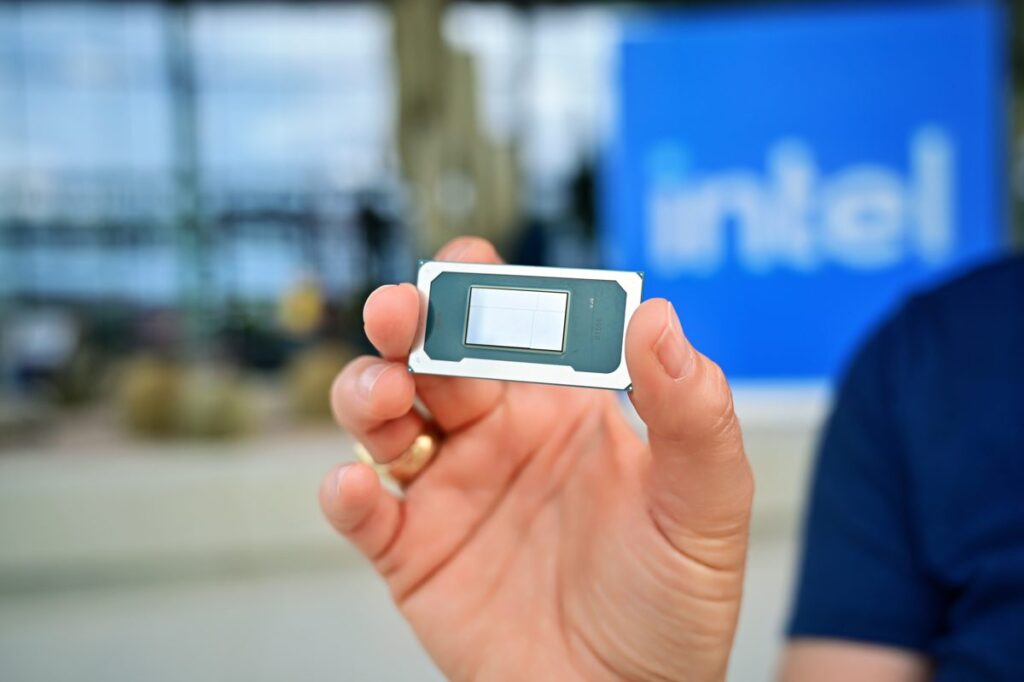
CHANDLER, AZ—Intel has reached a pivotal moment in its illustrious history. Amidst a fiscal and technical downturn and undergoing its largest reorganization to date, the company is also experiencing unprecedented external investment. The U.S. government, Nvidia, and Softbank have collectively invested billions, signaling a strong vote of confidence in the iconic chip manufacturer. At this crucial juncture, Intel’s newly unveiled next-generation compute platform, “Panther Lake,” and its advanced 18A process technology are under intense scrutiny.
Panther Lake is primarily a mobile chip platform, described by Intel as a refinement of its previous mobile CPU families: the energy-efficient “Lunar Lake” and the performance-centric “Arrow Lake.” Intel claims that Panther Lake combines the power efficiency of Lunar Lake with the performance prowess of Arrow Lake-H, featuring up to 16 next-generation cores, an updated Xe graphics tile, and a neural processing unit (NPU) with AI enhancements. The boldest claim from Intel is a “50% more CPU and GPU performance than Lunar Lake without compromising power efficiency.”
Understanding the 18A Process
Panther Lake’s CPU is built on Intel’s 18A process, a 2nm-equivalent technology. This marks the first deployment of 18A, alongside the “Clearwater Forest” data-center silicon. Intel’s 18A process introduces two key innovations: RibbonFET and PowerVia. RibbonFET, or “gate all around,” enhances transistor control by completely enclosing the transistor gate, reducing leakage and allowing for denser chip designs. PowerVia, on the other hand, delivers power through the back of the die, optimizing power distribution and reducing loss.
Intel emphasizes that this cutting-edge technology is being manufactured in the U.S., with facilities in Arizona and Oregon. The Arizona fab at Ocotillo is now fully operational, producing 18A wafers. This domestic production is a strategic move, ensuring Intel’s control over its advanced manufacturing processes.
Panther Lake’s Architectural Innovations
The Panther Lake chip employs a “chiplet” design, comprising discrete tiles for key components. The compute tile, GPU, and platform controller are all separate, allowing for greater design flexibility. Memory support includes LPDDR5x and DDR5, with peak speeds of 9,600MT/sec and 7,200MT/sec, respectively. This flexibility allows PC manufacturers to choose the best configuration for their systems.
Intel has divided Panther Lake processors into three categories, each with varying core counts and graphics capabilities. The basic version features eight cores and a four-core Xe graphics tile, while the top-tier version boasts 16 cores and a 12-core Xe graphics tile. This segmentation allows for tailored performance across different market segments.
GPU and NPU Enhancements
The new Xe3 architecture in Panther Lake’s GPU comes in two variants: one with four Xe cores and another with 12. The enhanced graphics capabilities are complemented by a larger L2 cache, reducing memory interface traffic by up to 36%. Intel’s demo of “per-pixel AI” showcases the potential of AI-driven graphics rendering, moving beyond traditional texturing methods.
The NPU, rated for 50 TOPS, introduces FP8 support, offering a balance between performance and memory efficiency. Intel claims a 40% improvement in TOPS per unit area over the previous generation, thanks to enhancements in the MAC array.
Connectivity and Performance Claims
Panther Lake supports advanced connectivity features, including Wi-Fi 7 and Bluetooth 6.0. Wi-Fi 7 introduces Multi-Link Operation and Multilink Reconfiguration, optimizing bandwidth and power efficiency. The platform also supports Thunderbolt 4, with Thunderbolt 5 as an optional addition.
Intel’s performance claims for Panther Lake are ambitious. The platform promises significant efficiency gains over Lunar Lake and Arrow Lake-H, with 30% less power consumption at similar performance levels. In multithreaded workloads, Panther Lake is expected to deliver over 50% more performance than its predecessors.
Looking Ahead: Launch and Implications
Intel plans to officially launch Panther Lake at CES 2026, with systems available for purchase shortly thereafter. This timeline suggests a Q1 2026 release, with the potential to reshape the mobile computing landscape.
Alongside Panther Lake, Intel is also advancing its data-center offerings with the “Clearwater Forest” Xeon processors. These 18A-based chips aim to increase server density and efficiency, supporting up to 288 cores and enhanced memory bandwidth.
Intel’s strategic focus on advanced process technology and domestic manufacturing positions it to regain leadership in the semiconductor industry. The success of Panther Lake and its accompanying technologies could mark a turning point for Intel, revitalizing its competitive edge and meeting the growing demands of AI-driven applications.





